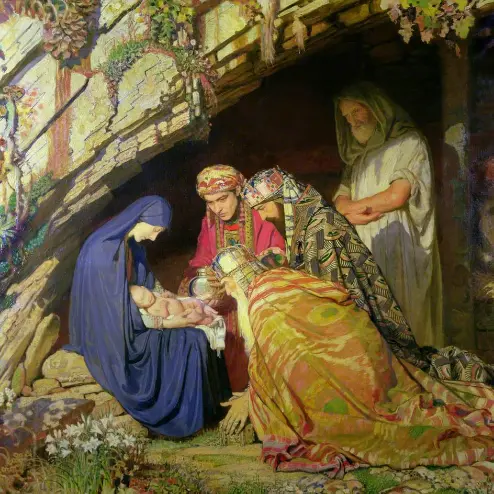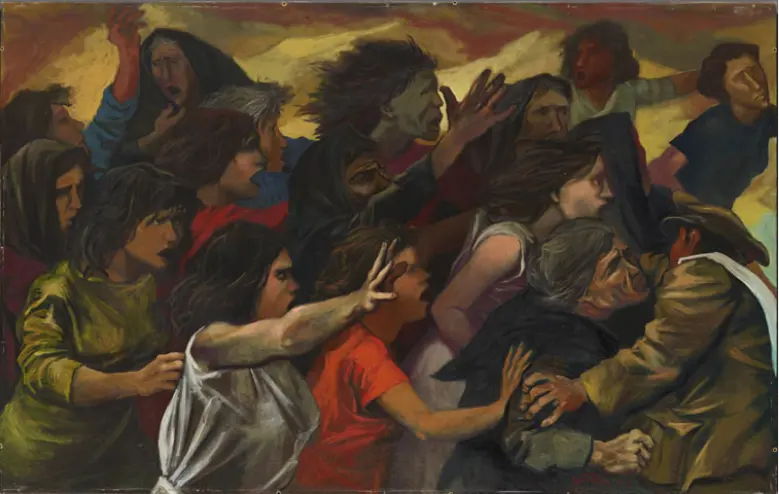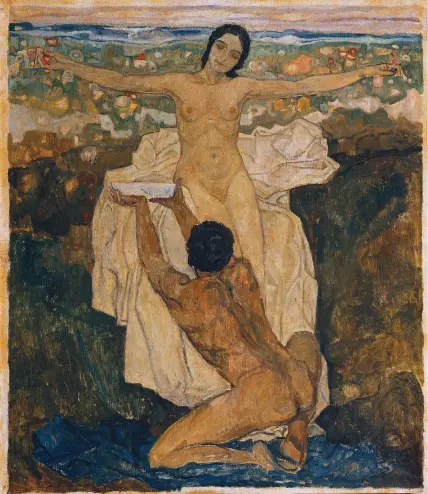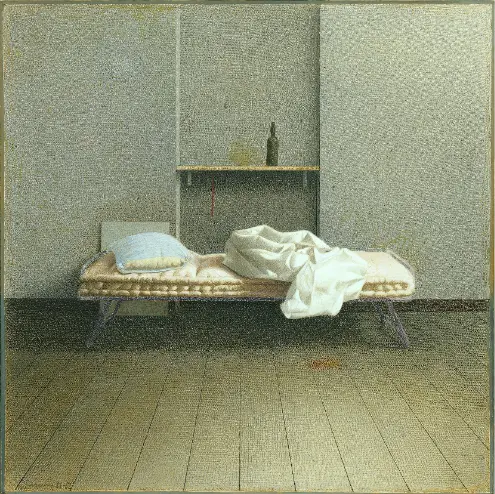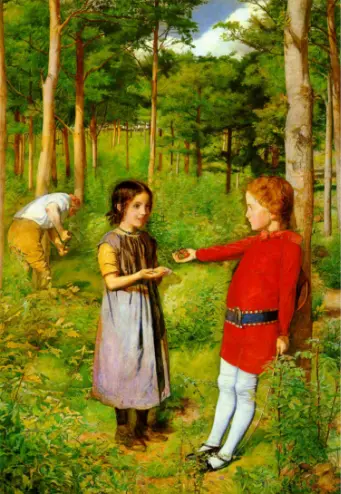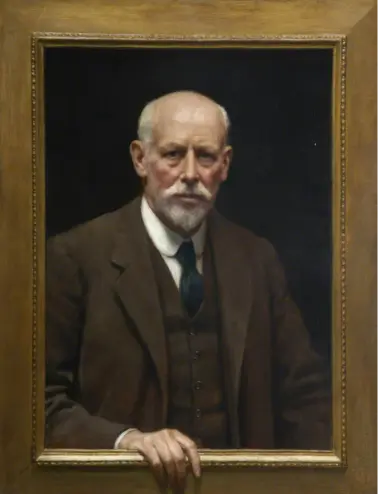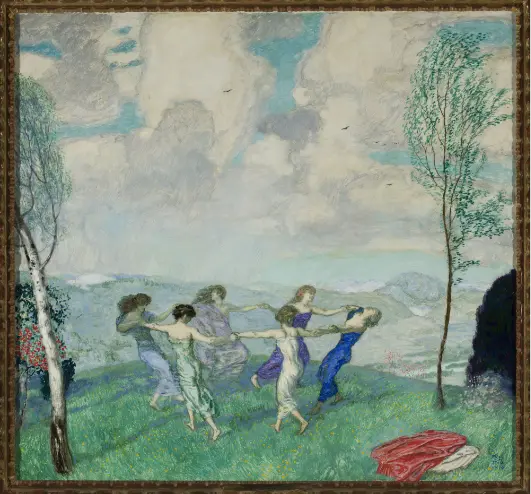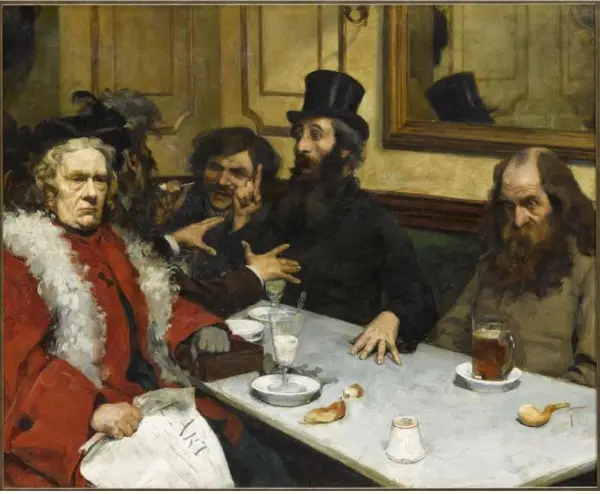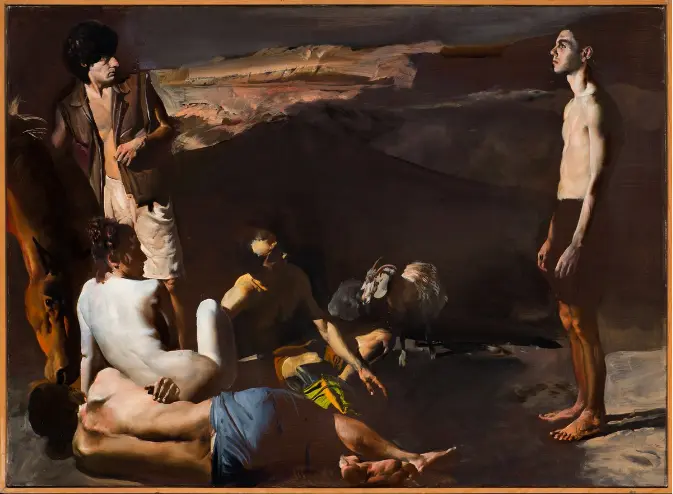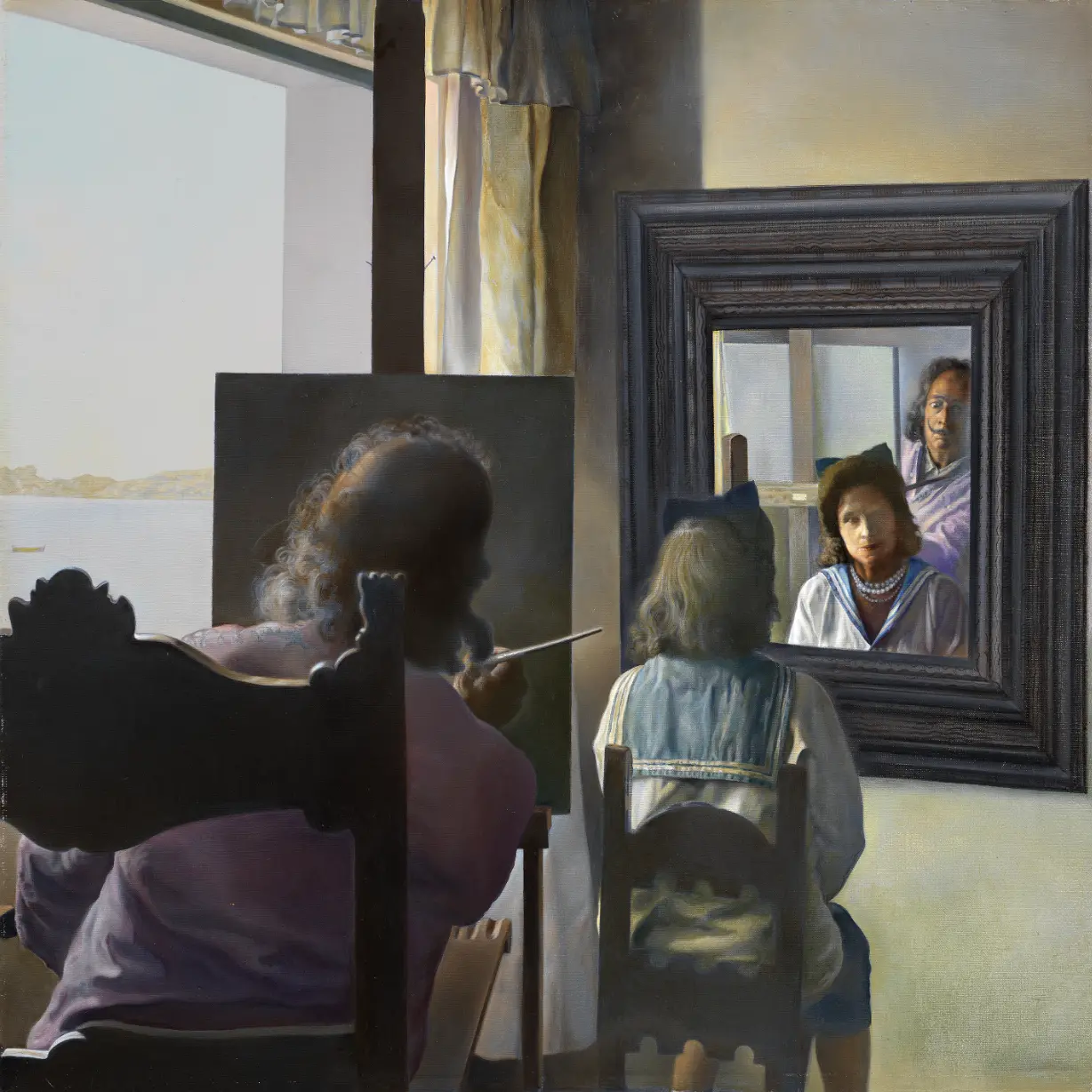
Salvador Dalí
Dalí seen from behind while painting Gala seen from behind eternalised by six virtual corneas provisionally reflected by six real mirrors
1972-73
Oil on canvas
Figueres, Fundació Gala-Salvador Dalí
As the title suggests, the exhibition is an artistic meditation on the journey from a man lost in incommunicability to a man found in intersubjectivity.
Nineteenth- and twentieth-century art very often returns to the fact that human beings must find their way out of a perspective of structural individualism, methodical egocentrism, philosophies of the subject, or a vision of universal mutual hostility. All distant, all competing. Relationality, in such perspectives, appears to be an accidental addition to an already complete substance, while conflictuality appears so radical that it leads us to explain and experience social relations in terms of protecting the individual’s freedoms and as a state of opposition to someone who abuses both the world and us. From the logic of proximity and the moral duties of brotherly love, justice and gift, we gradually slide towards an approach to life and society in which the maximum effort is to offer us at best a certain mutual tolerance and whose greatest benefit seems to be privacy. Even birth and death are no longer information that can be publically asked and certified; they are the so-called ‘sensitive’ data of beings who are perhaps on the verge of losing their sensibilities.
Between nineteenth- and twentieth-century art has frequently depicted this drift, the progressive disorientation of the subject and the perception of an imprisonment of the ego and, gradually, of its own disintegration into an elusive enigmaticity and consequently into an underlying incommunicability. Proust, Joyce, Kafka, Sartre, in literature, parallel what happens in many paintings from the mid-nineteenth century onwards.
A different concept of man, which has developed in parallel in the West over the past hundred years, starting with Emmanuel Mounier and Jacques Maritain, passing through Jurgen Habermas, and ending with Paul Ricoeur, focuses on communitarian personalism and intersubjectivity. The ancient invitation of knowing thyself constitutively implies the recognition of otherness and the inclusion of each in the connection with others.
No one really knows himself and the world except the acknowledgments or non-acknowledgments experienced in his life of relationships. The art of the nineteenth and twentieth centuries has often manifested this irrepressible desire of human beings to establish bonds, to recognize themselves in others, to live for communion, despite a multitude of limitations.
After the season of Enlightenment rationalism, which had its correlative in the formal perfection pursued by Neoclassicism, almost as a counterpoint, the culture of the West was traversed by a Romantic fever that put the theme of the great passions, interpersonal and collective, back at the center of attention: the feeling of love, friendship, patriotic sentiment and the social, corporate one. Thus, from Romanticism to the present day, an art journey unfolds that testifies to how interconnected we are.
The exhibition Together will give us food for thought, and arouse powerful emotions and intimate memories. The path of the exhibition – which will extend over ten exhibition rooms on the second floor of Casa Cavazzini – starts from the struggle to emerge from oneself or to find open doors and then makes us rethink the fundamental experiences of contact and connection with others, with creatures, and with God.
Useful
information
times
Monday
14.00 - 18.00
Tuesday
Wednesday
Thursday
09.30 - 18.30
Friday
Saturday
Sunday
09.00 - 20.00
Last admission
80 minutes before closing time
Please arrive at the exhibition at least 10 minutes before your scheduled visit for admission and ticket procedures.
On monday 24th and on thuesday 25th April, on monday 1st May and on friday 2nd June the exhibition will be open from 9 am to 8 pm

